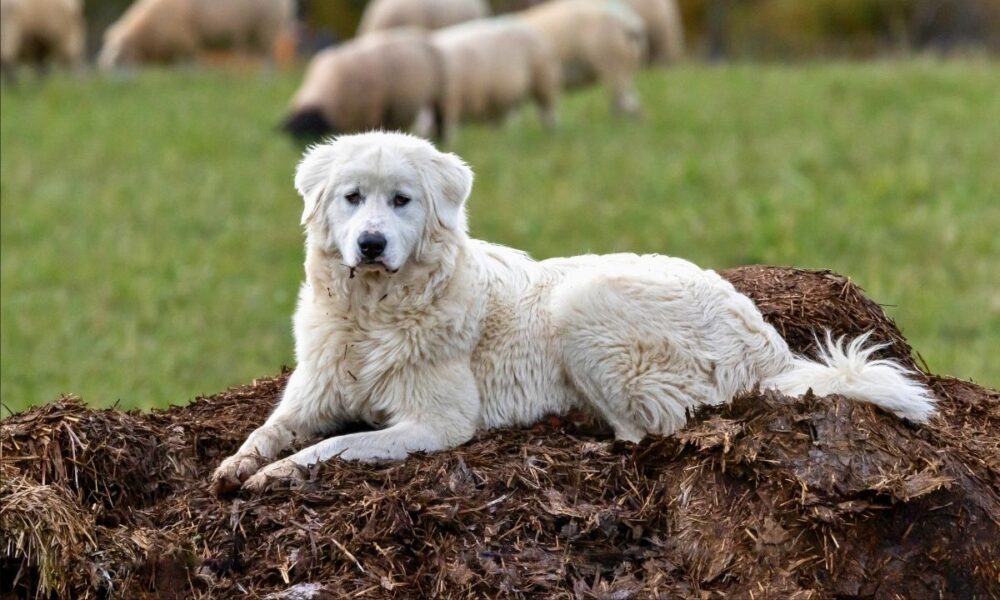The use of livestock guardian dogs (LGDs) — a practice dating back millennia — is gaining renewed interest among small regenerative farmers. Still, the animals’ suitability and training remain a topic of debate.
Texas rancher Sky Toney, speaking at the 2025 Southern Family Farmers and Food Systems Conference, said LGDs offer multiple benefits to livestock producers. He described these dogs as breeds specially developed to live with and protect livestock, helping mitigate losses from predators and reducing indirect costs like stress-related health issues in animals.
According to Toney, LGDs also support ecological balance by reducing reliance on lethal predator control, contributing to conservation efforts, and easing conflicts between wildlife and farmers. He emphasized the dogs’ 24/7 vigilance without added labor costs or overtime pay, while noting the initial investment and ongoing care costs are manageable, typically ranging between $500 and $2,500 upfront and around $500 annually for feed and veterinary care.
“Producers report an average of 7.5 to 10 hours of labor per month caring for these dogs, with young dogs requiring more attention than mature ones,” Toney explained. “Studies have shown time savings of nearly 18 hours a month and improved quality of life for both owners and livestock.”
However, the effectiveness of LGDs depends heavily on choosing the right dog, proper early bonding, socialization, and ongoing training, Toney said. For example, Toney found Maremmas and Great Pyrenees to be some of the best LGDs, although they may not be appropriate for all climates.
Some online homesteader forums showed users making concurrent points to Toney.
A Reddit user writing under the name “stopphones” questioned whether adopting adult or mixed-breed LGDs from shelters is advisable, noting that many recommend purebred puppies raised with intensive training specifically for livestock protection. The user expressed concern about lacking the expertise to train a dog properly, preferring to adopt a trained adult, but unsure if that would work.
Other small ag writers noted that even dogs from breeds with amenable temperaments for serving as an LGD can be difficult to train.
Small farmer Misty Lester echoed some concerns on Facebook, praising LGDs for their loyalty but warning about their high training needs and potential challenges. She noted that her Great Pyrenees can leap fences and is “notoriously hard to keep contained if not loyal to something that’s inside the fence,” adding that the dogs often show greater loyalty to goats than to poultry.
Professional LGD trainer Cindy Benson cautioned that companion dog trainers frequently lack the specialized skills required to work with LGDs, sometimes resorting to harsh methods like shock collars that can provoke aggression. Benson pointed out on her blog that about 30% of LGDs “fail” by their owners’ standards, with many being euthanized, a failure she attributes to early mismanagement and improper training.
She stressed the importance of positive reinforcement and understanding LGDs’ independent nature, which contrasts sharply with companion dogs that respond to obedience commands. According to Benson, LGDs think for themselves and work continuously, so traditional obedience training can backfire, leading to stress and behavioral issues.
Farmer Sarah Campbell shared a personal story on her blog about her LGD Kelso, who was not suited to guarding livestock despite extensive training and professional help. Kelso killed an elderly sheep and chased lambs, causing Campbell grief and forcing her to rethink the dog’s role on her farm. She highlighted that LGDs “take a lot of training and sometimes they don’t work out,” adding that farmers must be prepared for such challenges and potential heartache.
Toney recognized the inherent difficulties in selecting the right LGDs and offered criteria to help producers select a canine partner:
- Working Parents
- Healthy Individual & Line
- No Prey Drive
- Submission to livestock
- Good Temperament
- Right Age
- Respects [property] Boundaries
The debate over LGDs reflects the complexities of integrating animals into regenerative agriculture practices, balancing costs and benefits, and managing expectations around behavior and training. While proponents like Toney emphasize LGDs’ ability to reduce predator losses and support ecological harmony, others caution that without careful selection, training, and commitment, LGDs may fall short of their promise.


